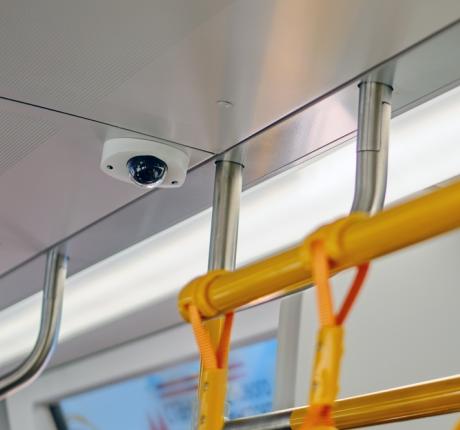
Language differences on-board: a barrier to safety?
News from the lab
In our research lab we are helping our clients to create the best passenger experience possible. Whether we're working on refurbishments or at the drawing board for a brand new build, we are always on the look-out for those things that "everyone needs, yet nobody wants to talk about".
This month's interview is with R&D specialist Maik Strietzel, who explains how cloud services can help to overcome language barriers on public transportation.
Stay up-to-date! Subscribe to our news today.
Key takeaways: Improving emergency communications
- In emergency situations language barriers aggravate the feelings of fear, frustration, and an overall loss of control.
- Thanks to cloud services we can enjoy new functionalities such as live translation, text-to-speech, speech-to-text and transfers of video footage.
- Although cloud services offer huge advantages, only an offline server can guarantee live translation at all times. “
Hello, can you hear me?
Passenger intercoms offer reassurance in emergency situations. But what if passengers in need and train crew speak different languages? In these kind of situations language barriers only aggravate the feelings of fear, frustration, and an overall loss of control. So how can train operating companies deal with these language differences?

Loud and clear
When people are under intense stress, language barriers have quite an impact, according to R&D specialist Maik Strietzel. He has been working on a multilingual translation server to ease linguistic fragmentation on-board.
Just imagine: an intercom where messages can instantly be made available in several languages; where passengers and crew can interact seamlessly in real time with one another regardless of their nationality; and where video footage is included to give extra information.
“Cloud services and the expansion of the 5G network for rail bring many advantages in these kinds of situations”, he says. “First of all, multilingual engines enable live translation from one language to another. Secondly, it is possible to read out a written text to the driver or to translate a spoken message and show it almost immediately on the display. Thirdly, a cloud connection enables video footage to be sent to different locations on the train or to the control center. In this way interlocutors get extra visual information to evaluate the emergency more accurately.”
"Although cloud services offer huge advantages, we are working on an on-board solution. An offline server can guarantee live translation at all times."
- Maik Strietzel
Product manager
Signs of life
And there is more: deaf persons can just press a symbol in the upper line to get a preselection of short messages. In this way they can send "I need help" or "I want to report a crime" to the train crew or control center.
The control center can either answer via chat or contact the user via Speech-To-Text function. In this case they can speak into the microphone and the passenger is able to see what was said on the screen and the passenger answers via chat function again. Connected to a SIP application, the integrated camera transmits a video image to the train crew.
To cloud or not to cloud
“Although cloud services offer huge advantages, we are working on an on-board solution”, says Maik Strietzel. “Not every vehicle is connected to the internet and in some areas the internet connection is too unstable. An offline server can guarantee live translation at all times. “
About Maik Strietzel
Maik Strietzel is a product manager specialized in Passenger Information Systems for rail. He has been with Televic GSP since 2011, gaining extensive experience in conducting research and managing projects.
With his fascination for the rail industry, engineering concepts and product design, he is on a mission to discover and tackle communciation challenges on-board trains.



